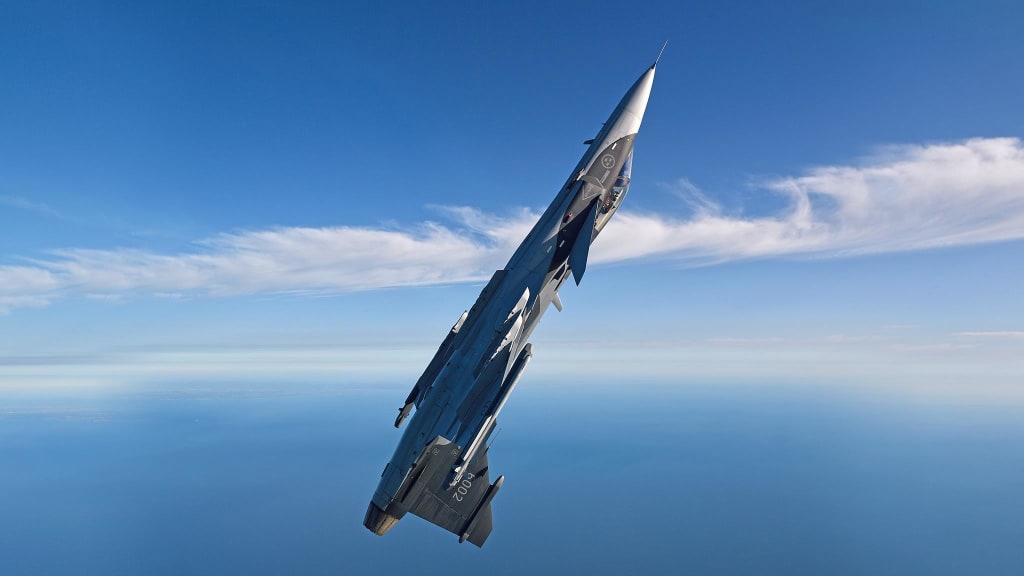The Indian MRFA Competition: The Case of Gripen
Stockholm. Contemporary fighters are designed by countries that rely on large fleets and limitless resources to ensure there are enough aircraft in the air when required. On the other hand, Gripen is designed and tailored for nations that need to operate assets independently during long periods of conflicts against adversaries with perhaps even larger fleet size and really advanced combat systems.
“In my view, that also summarises India’s challenges. What distinguishes Gripen from other fighters is that it is designed from the start with these challenges in mind,” says Kent-Åke, Sales and Marketing Director at SAAB.
The key to air dominance is demonstrable deterrence in the air. And for that, aircraft need to be visible in the air and show strength while patrolling India’s vast borders 24/7. The other element is a high level of readiness to counter consistent efforts to probe air defence systems. The air force would need to exhibit credible robustness and resilience to withstand surge attacks and the stamina to sustain high tempo operations during long periods of conflicts. In effect for countries like India which face challenges across multiple fronts for extended periods of time, the IAF would need to demonstrate the power and ability to fight attritional warfare against an enemy with large resources.
“With Gripen, India will have the ultimate warhorse but also the workhorse that stays in the air, patrols India’s vast borders 24/7, is resilient to meet surge attacks as well as fight and win attritional warfare scenarios over long periods of conflict,” says Kent-Ake.
Unlike other fighters, Gripen is designed to operate from dispersed road bases, meaning that the entire fleet can be deployed for decentralized operation from temporary bases. To enable that operational concept, huge effort has been invested to ensure very reliable systems and equipment that rarely fail. Innovative solutions bring ease and speed to maintenance activities, reduce logistics footprint such as spares, manpower and support equipment as well as minimize the time spent on the ground.
“Having almost 100% of the fighters mission-ready on the tarmac should not be a problem for any platform. But what happens when you start flying, sortie after sortie in high-tempo operations during longer periods? With less maintainable and reliable, heavy, twin engine configurations you will rapidly start exhausting your resources of fuel, spares and manpower. The higher failure rates that inevitably come with the more installed equipment will soon get them grounded.”
The second factor that works to Gripen’s advantage in the competition is the inherent design that has created a fighter that would be constantly developed within its framework to deliver higher and higher capability as technologies evolve. The future of fighter aircraft development and aerial warfare would be driven by changes in processing power, incorporation of machine learning and artificial intelligence in the avionics of the plane.
“Our view is that the future of air combat will be defined by technology, driven by the development of computational power that enables really advanced software. We see that Moore’s law is dead. Moore’s law stipulated that computational power is doubled every second year. It is already and will be much higher, and who wants to sit in a fighter with millions of millions times slower computers? That is why Gripen E has a really disruptive design that will enable the user to take advantage and embrace new technology development rather than being a victim of it,” emphasizes Kent-Ake.
In Gripen E, the systems have been partitioned between tactical and flight critical features as well as in layers so software is independent of the hardware it runs on and vice versa. This means that tactical systems updates can be made much faster, at less cost and at less risk. Changing core computers or software, which usually takes years or decades, would be done in days or months.
Other contemporary fighters with legacy architecture will continue to suffer severely from obsolescence but for the Gripen user, rapid obsolescence brings an opportunity to stay further ahead rather than be a problem.
With Gripen, the user – the pilots and the air force – can take benefit of the rapid technology development and constantly develop new tactics, to always stay operationally relevant one step ahead of the opponent.
This was published by India Strategic in June 2021.

